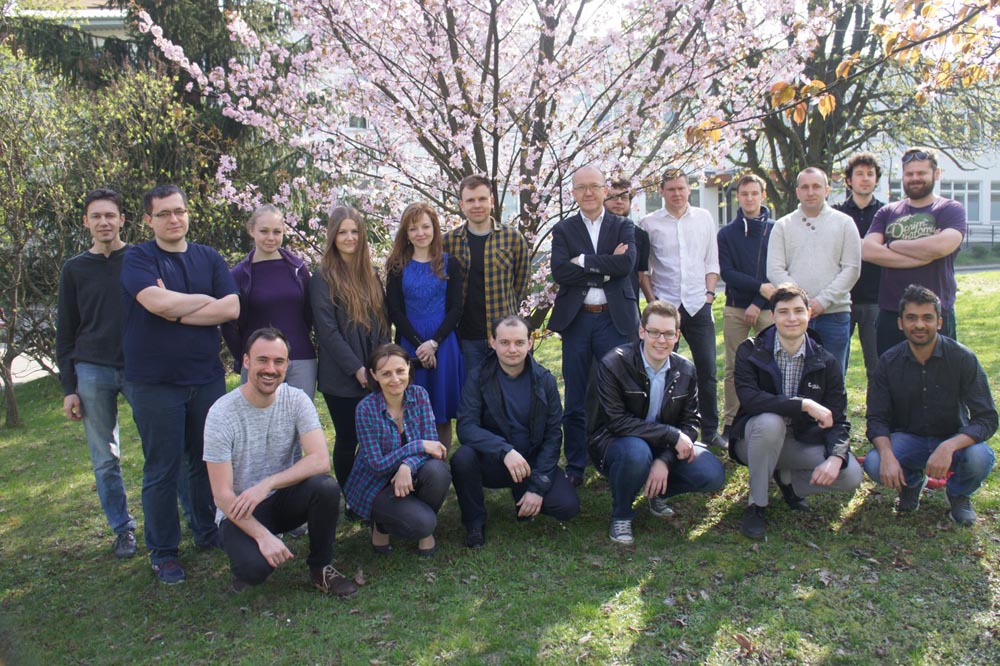Looking inside cells possible thanks to innovative dyes
They emit strong red light and facilitate the study of the finest cellular structures. New, stable fluorescent dyes were developed by scientists from the PAS Institute of Organic Chemistry. They provide an opportunity to investigate, for example, proteins associated with Parkinson's disease or Alzheimer's disease.
The research was financed by the Foundation for Polish Science under the TEAM program and the results were published in the most renowned scientific journal – Angewandte Chemie.

In the photo, Prof. Daniel Gryko’s team
Useful dyes
Polish chemists, in cooperation with French and German scientists, have created a new class of fluorescent organic dyes, which contain so-called nitro groups that until recently were thought to suppress fluorescence rather than support it. "The essence of this examination was to discover a way, in which dyes containing nitro groups exhibit both stable emission and fluorescence properties," explains Prof. Daniel Gryko, project manager and director of the PAS Institute of Organic Chemistry.
How it works
Fluorescence microscopy allows observation of living cells, their structures and even the smallest proteins, that have been previously labeled for fluorescence (with fluorescent dyes). Images obtained this way have better resolution (up to ten times higher) than those produced by conventional optical microscopes. The most advanced fluorescence microscopy technique is stimulated emission depletion (STED) microscopy, which earned three of its creators a Nobel Prize in 2014.
Thanks to STED microscopy we can observe the secretory pathway of individual proteins in the living cell. STED gives insight into the natural processes that occur in living organisms. Electron microscopy also provides super-resolution images, but one of its limitations is that samples must be placed under vacuum in electron microscopy, which means that only non-living objects can be examined.
Why red
To perform fluorescence observations fluorescent reagents are required. A new class of fluorescent dyes developed at the PAS Institute of Organic Chemistry emit very strong red light, which is the most visible color under a fluorescence microscope.
"How deep we can peer into tissues depends, among others on how much laser light will be absorbed before it reaches our dye. The red color is the one that is absorbed by fewer natural chemicals present in living tissues. In addition, it has a longer wavelength, which means less scattering before reaching the target "- adds prof. Gryko.
Fluorescence applications
Fluorescent compounds are widely used nowadays. Starting from highlighters, through security marks embedded in banknotes (luminescent inks), to popular cell phones, tablets, laptops and TV sets with displays made of OLED dioses. Fluorescent compounds are also used in modern molecular biology and medical diagnostics.
Source of information: PAS Institute of Organic Chemistry, Foundation for Polish Science
Source of photo: PAS Institute of Organic Chemistry
